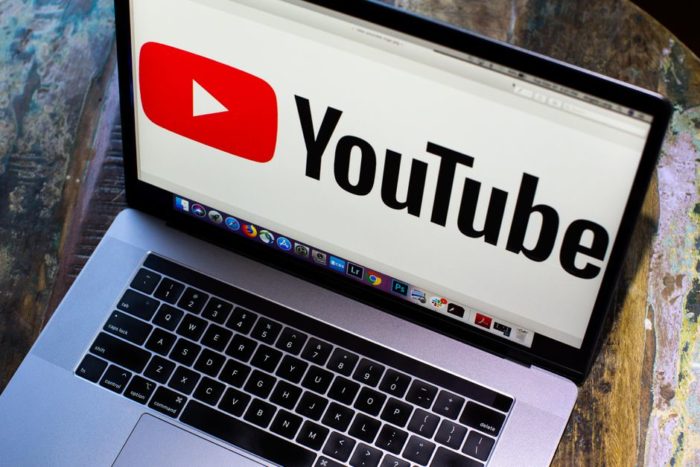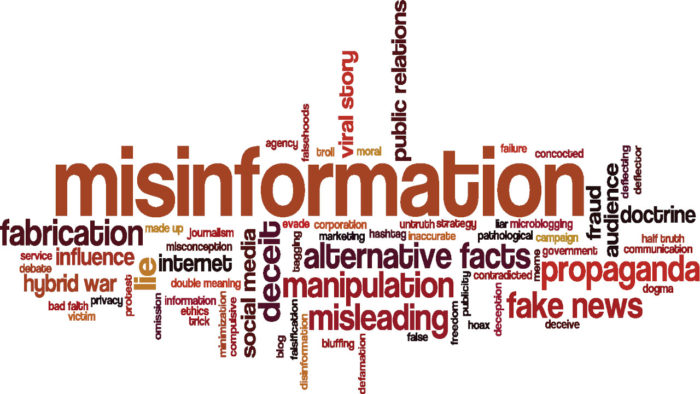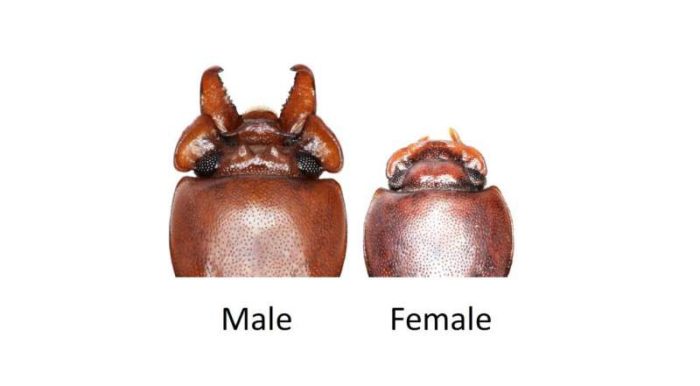Jan
27
2022
 The Twitterverse is outraged, appropriately, it turns out, that Florida Acting Surgeon General Joseph Ladapo, who is undergoing confirmation hearings, refused to state when asked directly four times, that the COVID vaccines are safe and effective. At first he straight-up dodged the question, saying, “The question is a scientific one.” Uh, yeah, and you’re an MD, PhD with a degree in public health (i.e. a medical scientist) so answer the question. When pushed repeatedly he finally did answer that the vaccines have:
The Twitterverse is outraged, appropriately, it turns out, that Florida Acting Surgeon General Joseph Ladapo, who is undergoing confirmation hearings, refused to state when asked directly four times, that the COVID vaccines are safe and effective. At first he straight-up dodged the question, saying, “The question is a scientific one.” Uh, yeah, and you’re an MD, PhD with a degree in public health (i.e. a medical scientist) so answer the question. When pushed repeatedly he finally did answer that the vaccines have:
“reasonable effectiveness for the prevention of hospitalization and death” and “relatively low effectiveness for prevention” against transmission over time.
This is not accurate. They have extremely high effectiveness at preventing hospitalization and death. The risk of dying from COVID is 53 times greater for those who are unvaccinated vs those who are fully boosted. Regarding prevention of transmission, Ladapo is narrowly correct but misleading through selective reporting. Studies show that a fully vaccinated person has a relative risk of 0.32 of passing on the virus compared to an unvaccinated person (so an unvaccinated person who gets COVID is 3 times more likely to pass it on). This is not “low effectiveness”, but the same data does also show that this protection wanes over time, and is mostly gone three months after the second shot. However, this is for vaccinated but not boosted individuals. Other studies show that boosted individuals have a 93% relative reduction in their risk of contracting COVID (even Delta), either symptomatic or asymptomatic, and of course people who never catch the virus cannot pass it on.
Continue Reading »
Dec
16
2021
 The COVID-19 pandemic is not done with us yet. We are still in the middle of the delta surge, and while delta will eventually pass, the omicron variant is right on its heels. In the US we just passed the milestone of 800,000 people dead from COVID with over 50 million cases. More Americans died of COVID in 2021 than in 2020, although in 2021 most deaths were among the unvaccinated. The vaccines remain our best defense against this pandemic, which is why it is tragic that there are still holdouts for tribal or ideological reasons. Regardless, it is extremely likely that we will be dealing with COVID through 2022. It is also likely that COVID is now endemic, and while it may fade down to flu-like proportions, we will also very likely have to deal with it for years to come. COVID is also likely not the last respiratory pandemic we will have to deal with this century.
The COVID-19 pandemic is not done with us yet. We are still in the middle of the delta surge, and while delta will eventually pass, the omicron variant is right on its heels. In the US we just passed the milestone of 800,000 people dead from COVID with over 50 million cases. More Americans died of COVID in 2021 than in 2020, although in 2021 most deaths were among the unvaccinated. The vaccines remain our best defense against this pandemic, which is why it is tragic that there are still holdouts for tribal or ideological reasons. Regardless, it is extremely likely that we will be dealing with COVID through 2022. It is also likely that COVID is now endemic, and while it may fade down to flu-like proportions, we will also very likely have to deal with it for years to come. COVID is also likely not the last respiratory pandemic we will have to deal with this century.
All of this is why masks are still important. We just have to accept the fact that face masks are now an important part of life. At least for the foreseeable future we will need face masks as a layer of protection in health care settings, large indoor crowds, among vulnerable populations, and for anyone who is symptomatic. Walking around in the public maskless, sneezing and coughing from a “cold” is no longer socially acceptable. If you want to avoid the mask in small or outdoor crowds and in gatherings of family and friends, then get fully vaccinated. But even then, there are some situations where masks provide an extra needed layer of protection.
There are at least two important questions relating to mask wearing. The first is – do they really work? The short answer is yes, they do. But obviously there is some complexity here. When worn properly, and in the right setting, masks provide a measurable level of protection from a respiratory infection. They protect you and they protect others. The latest evidence to support this conclusion looked at countries with and without face mask policies. They found:
Average COVID-19 mortality per million was 288.54 in countries without face mask policies and 48.40 in countries with face mask policies.
Continue Reading »
Nov
29
2021
 Experts knew, and had been warning, that delta was not going to be the last Greek letter to sweep across the world. The World Health Organization (WHO) tracks variants of the SARS-CoV-2 virus which causes COVID-19. They track variants of interest (VOI) which have been identified as potentially problematic, and variants of concern (VOC) which have been demonstrated to have either increased infectivity, increased illness severity, and/or evasion of preventive measures (such as vaccines or masks). These variants are given a Greek letter designation as they are added to the list. What is now called the omicron variant has been added to the list of VOC. Here’s what we know so far.
Experts knew, and had been warning, that delta was not going to be the last Greek letter to sweep across the world. The World Health Organization (WHO) tracks variants of the SARS-CoV-2 virus which causes COVID-19. They track variants of interest (VOI) which have been identified as potentially problematic, and variants of concern (VOC) which have been demonstrated to have either increased infectivity, increased illness severity, and/or evasion of preventive measures (such as vaccines or masks). These variants are given a Greek letter designation as they are added to the list. What is now called the omicron variant has been added to the list of VOC. Here’s what we know so far.
The virus appears to have originated in South Africa. Fortunately, South Africa has a robust surveillance system and labs that can grow the virus and do a whole-genome sequence. They were therefore able to identify the variant quickly and share their information with the world. This isn’t the first variant to originate in South Africa, which raises the question of why this is the case? Increased surveillance may be part of the answer, but is not able to fully explain why. Some scientists speculate that South Africa’s large population of HIV infected and inadequately treated people provide a fertile breeding ground for new variants.
Variants are caused by mutations in the virus genome, some of which may alter proteins and therefore viral functions. SARS-CoV-2 does not have a particularly high mutation rate, but because we are having a world-wide pandemic there are lots of opportunities for new mutations to occur. It’s possible that when a person has a prolonged infection the viruses in their system are under selective pressure, so any mutation that might partly evade the immune system will be favored. Those with untreated HIV have an impaired immune response. This may be just enough to provide some selective pressure but not enough to fight off the infection, creating a breeding ground for new variants.
Continue Reading »
Oct
01
2021
 There is pretty broad agreement that the pandemic was a net negative for learning among children. Schools are an obvious breeding ground for viruses, with hundreds or thousands of students crammed into the same building, moving to different groups in different classes, and with teachers being systematically exposed to many different students while they spray them with their possibly virus-laden droplets. Wearing masks, social distancing, and using plexiglass barriers reduces the spread, but not enough if we are in the middle of a pandemic surge. Only vaccines will make schools truly safe.
There is pretty broad agreement that the pandemic was a net negative for learning among children. Schools are an obvious breeding ground for viruses, with hundreds or thousands of students crammed into the same building, moving to different groups in different classes, and with teachers being systematically exposed to many different students while they spray them with their possibly virus-laden droplets. Wearing masks, social distancing, and using plexiglass barriers reduces the spread, but not enough if we are in the middle of a pandemic surge. Only vaccines will make schools truly safe.
So it was reasonable, especially in the early days of the pandemic, to convert schooling to online classes until the pandemic was under control. The problem was – most schools were simply not ready for this transition. The worst problem were those student who did not have access to a computer and the internet from home. The pandemic helped expose and exacerbate the digital divide. But even for students with good access, the experience was generally not good. Many teachers were not prepared to adapt their classes for online learning. Many parents did not have ability to stay at home with their kids to monitor them. And many children were simply bored and not learning.
This is a classic infrastructure problem. Many technologies do not function well in a vacuum. You can’t have cars without roads, traffic control, licensing, safety regulations, and fueling stations. Mass online learning also requires significant infrastructure that we simply didn’t have.
Continue Reading »
Sep
30
2021

Last year YouTube (owned by Google) banned videos spreading misinformation about the COVID vaccines. The policy resulted in the removal of over 130,000 videos since last year. Now they announce that they are extending the ban to misinformation about any approved vaccine. The move is sure to provoke strong reactions and opinions on both sides, which I think is reasonable. The decision reflects a genuine dilemma of modern life with no perfect solution, and amounts to a “pick your poison” situation.
The case against big tech companies who control massive social media outlets essentially censoring certain kinds of content is probably obvious. That puts a lot of power into the hands of a few companies. It also goes against the principle of a free market place of ideas. In a free and open society people enjoy freedom of speech and the right to express their ideas, even (and especially) if they are unpopular. There is also a somewhat valid slippery slope argument to make – once the will and mechanisms are put into place to censor clearly bad content, mission creep can slowly impede on more and more opinions.
There is also, however, a strong case to be made for this kind of censorship. There has never been a time in our past when anyone could essentially claim the right to a massive megaphone capable of reaching most of the planet. Our approach to free speech may need to be tweaked to account for this new reality. Further, no one actually has the right to speech on any social media platform – these are not government sites nor are they owned by the public. They are private companies who have to the right to do anything they wish. The public, in turn, has the power to “vote with their dollars” and choose not to use or support any platform whose policies they don’t like. So the free market is still in operation.
Continue Reading »
Sep
20
2021
It is not uncommon, if you do not like any particular finding of scientific research, to attack the institutions of science or even the very notion of science itself. These kinds of attacks are now common in the anti-vaccine pushback against common sense public health measures, and often from a religious or ideological perspective. It’s not surprising that the false claim that science is just philosophy has reared its head in such writings. The attack on science also tends to have at least two components. The first is a straw man about how scientists are pretending that science is a monolithic perfect and objective entity. This is then followed by the claim that, rather, science is just opinion, another form of subjective philosophy. This position is entirely wrong on both counts.
Here is one example, embedded in a long article loaded with misinformation about vaccines and the COVID pandemic. There is way too much misdirection in this article to tackle in one response, and I only want to focus on the philosophical claims. These are now common within certain religious circles, mostly innovated, at least recently, in the fight against the teaching of evolution. They have already lost this fight, philosophically, scientifically, and (perhaps most importantly) legally, but of course that does not mean they will abandon a bad argument just because its wrong.
First the straw man:
The second consequence of “following science” is that it reinforces one of modernity’s most enduring myths: that “science” is a consistent, compact, institutionally-guaranteed body of knowledge without interest or agenda. What this myth conceals is the actual operation of the sciences—multiple, messy, contingent, and tentative as they necessarily are.
The myth is itself a myth. It exists almost nowhere except in the minds of science deniers and those with an anti-science agenda. Elsewhere the author admits:
As a lay person, unqualified to judge the technical issues, I have concluded only that there might be a legitimate question here, and one that must, necessarily, remain open until time and experience can settle it.
Continue Reading »
Aug
05
2021
 Misinformation is a booming industry, and that is often exactly what it is. Sometimes it may emerge organically, out of sincere error or misunderstanding. But increasingly misinformation is being weaponized to achieve specific goals. That goal might be to protect the interests of a corporation or industry, to promote a candidate or particular policy position, to engage in a broader culture-war, promote an ideology, or just sell a brand or product. Recently it has become more apparent to me that often there is a common strategy to weaponizing misinformation. It’s likely always been there, but is getting more blatant.
Misinformation is a booming industry, and that is often exactly what it is. Sometimes it may emerge organically, out of sincere error or misunderstanding. But increasingly misinformation is being weaponized to achieve specific goals. That goal might be to protect the interests of a corporation or industry, to promote a candidate or particular policy position, to engage in a broader culture-war, promote an ideology, or just sell a brand or product. Recently it has become more apparent to me that often there is a common strategy to weaponizing misinformation. It’s likely always been there, but is getting more blatant.
The “misinformation trifecta” combines three synergistic strategies. The first is spreading the misinformation itself, factual claims that are wrong, misleading, fabricated, cherry-picked, or simply indifferent to the truth. This is the “payload”, if you will. For example, claiming that GMOs are harmful to one’s health is simply wrong. There is no evidence to support this, and in fact there is copious evidence that GMO crops are as safe and healthful and their non-GMO counterparts. This bit of information is used to promote a certain ideology (based on the appeal to nature fallacy) and a competitive brand, organic farming. It is often packaged with lots of other bits of misinformation, all woven together into a certain narrative.
Narratives are powerful because they tend to take on a life of their own. They organize misinformation into a story, and people have an easier time understanding, remembering, and relating to stories rather than isolated facts. Narratives also provide a lens through which we view reality. Once you have sold someone on a narrative, they then curate their own misinformation to further support the narrative.
If misinformation itself were the only issue, then the solution would be straightforward. This is the “knowledge deficit” model, where misinformation is corrected with better, more accurate or complete information. Past efforts at public education and countering misinformation have focused on this knowledge deficit approach. This has a limited (but non-zero) effect. It is highly variable depending on the particular topic, but mostly it is inadequate to counter misinformation.
Continue Reading »
Jul
20
2021
 In February on SBM I wrote about the Race Against Vaccine Hesitancy. At that point in time the pandemic was receding in the US in the face of a rapid vaccination program, but also the first new variants of SARS-CoV-2 were starting to appear. Essentially I argued that we were in a race between achieving herd immunity and the spread of new variants that might be more contagious or even vaccine resistant. Experts believed that we would know the answer by Summer.
In February on SBM I wrote about the Race Against Vaccine Hesitancy. At that point in time the pandemic was receding in the US in the face of a rapid vaccination program, but also the first new variants of SARS-CoV-2 were starting to appear. Essentially I argued that we were in a race between achieving herd immunity and the spread of new variants that might be more contagious or even vaccine resistant. Experts believed that we would know the answer by Summer.
Well, Summer is here, and the answer is in. We lost the race. Vaccine hesitancy won.
This doesn’t mean that the vaccination program has not been massively helpful. It has. As of now 48.6% of the US population is fully vaccinated, with 56.1% having received at least one dose. This includes children under 12, however, who are not currently eligible for any vaccine. A total of 68.3% of adults have been vaccinated, close to the 70% goal set by the Biden administration. From a logistical perspective, this is a success. The program peaked at over 3 million doses given per day. The program meant that the limiting factor was not the availability of vaccines or the ability to distribute and administer them. The limiting factor is people willing to get vaccinated.
While we may have come close, we did not achieve sufficient herd immunity. Part of the problem is that the vaccinated are not evenly distributed throughout the population. Vaccine uptake is patchy, which means there are clusters of unvaccinated people where the virus is free to spread. Arkansas, for example, is only at 35% fully vaccinated.
Continue Reading »
Jun
08
2021
 Evolution if one of the most fascinating scientific phenomena because it is so complex and operates over such varying and long timescales. It’s a real challenge to wrap one’s head around. There is therefore a tendency to settle on overly simplistic evolutionary narratives. This is not a criticism, we all do this in an attempt to grapple with evolutionary thinking. The challenge is to recognize this fact, and be open to a deeper, more complex and nuanced understanding of evolutionary processes. It’s a great example of what should be a general intellectual posture – recognize the limits of our current understanding (wherever that may be on the spectrum) and not only be open to, but seek out new information and concepts to keep incrementally pushing our understanding forward.
Evolution if one of the most fascinating scientific phenomena because it is so complex and operates over such varying and long timescales. It’s a real challenge to wrap one’s head around. There is therefore a tendency to settle on overly simplistic evolutionary narratives. This is not a criticism, we all do this in an attempt to grapple with evolutionary thinking. The challenge is to recognize this fact, and be open to a deeper, more complex and nuanced understanding of evolutionary processes. It’s a great example of what should be a general intellectual posture – recognize the limits of our current understanding (wherever that may be on the spectrum) and not only be open to, but seek out new information and concepts to keep incrementally pushing our understanding forward.
In that spirit, here is a study on the evolution of broad-horned flour-beetles that illustrates some of evolution’s complexity. The male broad-horned has exaggeratedly large mandibles, which is uses to compete with other males for mating access to females. This is an example of sexual selection, when a feature specifically increases mating success but is not necessarily broadly adaptable. The go-to example of this is the peacock’s tail feathers – a garish display meant to attract females, but an evolutionary burden in many other aspects. This sets up an evolutionary tug-of-war, where a feature may be advantageous in one respect but disadvantageous in another. Evolutionary processes are fairly efficient at balancing such conflicting forces.
As an aside, the balances tend to be only metastable. They can alter with changes in the environment or behavior. Even different individuals within a species can adopt different survival strategies that result in a different balance of traits. If a population within a species does this it may even eventually lead to a speciation event. For example, it has been documented that within some primate species dominant males will have access to females due to their alpha status, while others gain access by currying favor with the alpha, and still others gain access by gaining favor with the females and sneaking behind the alpha’s back. Still others may act as a “wing man” to a close kin, promoting their genes into the next generation by proxy. The lesson here is – no one strategy captures the wide diversity of behavior even within a single species.
Continue Reading »
May
27
2021

The pandemic has brought into sharp focus the potential danger of misinformation. There are times when we need to act collectively as a society to accomplish certain goals. This is particularly challenging in a society that is organized around a principle of individualism – a principle I endorse and value. Liberty is a precious right to be jealously defended. But it is not the only right, or principle of value. So at times we have to delicately balance various competing interests. I like my freedom, but I also really like not catching a deadly disease, or spreading it to my family.
In a perfect world (one we definitely do not live in) there would be no need for restrictive or draconian measures. All that would be necessary was distributing information – hey, if you want to protect yourself and others, wear a mask, socially distance, wash your hands, and get vaccinated. If you’re really interested, here are the facts, the published studies, the expert analysis, to back up these recommendations. Here are the error bars and level of uncertainty, the risk vs benefit analysis, and comparison to other options.
This approach is necessary, and works to a degree, but it is insufficient. There are two main shortcomings of the information approach. First, people are only semi-rational beings, not Vulcans. We are susceptible to tribalism, motivated reasoning, confirmation bias, and a host of cognitive biases, faulty heuristics, and logical fallacies. Our intuitions about balancing risk and benefit are also flawed, and we have a hard time dealing with very large numbers. Just peruse the comments to any blog post on this site that is even slightly controversial and you will find copious examples of every type of flawed thinking.
Continue Reading »
 The Twitterverse is outraged, appropriately, it turns out, that Florida Acting Surgeon General Joseph Ladapo, who is undergoing confirmation hearings, refused to state when asked directly four times, that the COVID vaccines are safe and effective. At first he straight-up dodged the question, saying, “The question is a scientific one.” Uh, yeah, and you’re an MD, PhD with a degree in public health (i.e. a medical scientist) so answer the question. When pushed repeatedly he finally did answer that the vaccines have:
The Twitterverse is outraged, appropriately, it turns out, that Florida Acting Surgeon General Joseph Ladapo, who is undergoing confirmation hearings, refused to state when asked directly four times, that the COVID vaccines are safe and effective. At first he straight-up dodged the question, saying, “The question is a scientific one.” Uh, yeah, and you’re an MD, PhD with a degree in public health (i.e. a medical scientist) so answer the question. When pushed repeatedly he finally did answer that the vaccines have:
 The COVID-19 pandemic is not done with us yet. We are still in the middle of the delta surge, and while delta will eventually pass, the omicron variant is right on its heels.
The COVID-19 pandemic is not done with us yet. We are still in the middle of the delta surge, and while delta will eventually pass, the omicron variant is right on its heels.  Experts knew, and had been warning, that delta was not going to be the last Greek letter to sweep across the world. The World Health Organization (WHO)
Experts knew, and had been warning, that delta was not going to be the last Greek letter to sweep across the world. The World Health Organization (WHO)  There is pretty broad agreement that the pandemic was a net negative for learning among children. Schools are an obvious breeding ground for viruses, with hundreds or thousands of students crammed into the same building, moving to different groups in different classes, and with teachers being systematically exposed to many different students while they spray them with their possibly virus-laden droplets. Wearing masks, social distancing, and using plexiglass barriers reduces the spread, but not enough if we are in the middle of a pandemic surge. Only vaccines will make schools truly safe.
There is pretty broad agreement that the pandemic was a net negative for learning among children. Schools are an obvious breeding ground for viruses, with hundreds or thousands of students crammed into the same building, moving to different groups in different classes, and with teachers being systematically exposed to many different students while they spray them with their possibly virus-laden droplets. Wearing masks, social distancing, and using plexiglass barriers reduces the spread, but not enough if we are in the middle of a pandemic surge. Only vaccines will make schools truly safe.
 Misinformation is a booming industry, and that is often exactly what it is. Sometimes it may emerge organically, out of sincere error or misunderstanding. But increasingly misinformation is being weaponized to achieve specific goals. That goal might be to protect the interests of a corporation or industry, to promote a candidate or particular policy position, to engage in a broader culture-war, promote an ideology, or just sell a brand or product. Recently it has become more apparent to me that often there is a common strategy to weaponizing misinformation. It’s likely always been there, but is getting more blatant.
Misinformation is a booming industry, and that is often exactly what it is. Sometimes it may emerge organically, out of sincere error or misunderstanding. But increasingly misinformation is being weaponized to achieve specific goals. That goal might be to protect the interests of a corporation or industry, to promote a candidate or particular policy position, to engage in a broader culture-war, promote an ideology, or just sell a brand or product. Recently it has become more apparent to me that often there is a common strategy to weaponizing misinformation. It’s likely always been there, but is getting more blatant. In February on SBM I wrote about the
In February on SBM I wrote about the Evolution if one of the most fascinating scientific phenomena because it is so complex and operates over such varying and long timescales. It’s a real challenge to wrap one’s head around. There is therefore a tendency to settle on overly simplistic evolutionary narratives. This is not a criticism, we all do this in an attempt to grapple with evolutionary thinking. The challenge is to recognize this fact, and be open to a deeper, more complex and nuanced understanding of evolutionary processes. It’s a great example of what should be a general intellectual posture – recognize the limits of our current understanding (wherever that may be on the spectrum) and not only be open to, but seek out new information and concepts to keep incrementally pushing our understanding forward.
Evolution if one of the most fascinating scientific phenomena because it is so complex and operates over such varying and long timescales. It’s a real challenge to wrap one’s head around. There is therefore a tendency to settle on overly simplistic evolutionary narratives. This is not a criticism, we all do this in an attempt to grapple with evolutionary thinking. The challenge is to recognize this fact, and be open to a deeper, more complex and nuanced understanding of evolutionary processes. It’s a great example of what should be a general intellectual posture – recognize the limits of our current understanding (wherever that may be on the spectrum) and not only be open to, but seek out new information and concepts to keep incrementally pushing our understanding forward.





